Description
Name in North American Boletes: Suillus intermedius AND Suillus subalutaceus
Genus: Suillus
Species: acidus
- Species 2: intermedius
- Species 3: subalutaceus
- Species 4: acidus var. intermedius
Common Name: “Sour Cap Suillus”
Tells: Cap ages from pinkish- or yellow-buff to yellow-brown. Cap skin usually tastes acidic. Stem will snap like a twig, is buff- to tan-yellow, & has red-brown dots. Often has a viscid, yellowish ring.
Other Information: Yellow to orange-yellow cap flesh may be pale or even whitish, esp. further away from the pores. Cap flesh DNS or slowly stains reddish brown. Buff-yellow pores age toward pale brown & slowly stain reddish brown. Likes pines, esp. in moss. The stem features and the acidic taste are the key ID features. The stem can be hollow, is usually crisp to the point it will snap like a twig, and usually has distinctive colors, markings, and a viscid ring.
Science Notes: North American Boletes lists two mushrooms, “Suillus intermedius f/k/a acidus” and “Suillus subalutaceus”, distinguished by its lack of a sour taste. DNA testing has merged the two and moved the name back to “Suillus acidus” – which makes sense anyway because it hints at the key tell.
Edibility: Good, with a lemony flavor.
CHEMICAL TESTS:
- NH4OH (Ammonia): Cap skin has no reaction. Cap flesh turns pink before shifting to grayish and then brown.
- KOH: Cap skin has no reaction. Cap flesh turns pink before shifting to grayish and then brown. Tubes turn wine-red to cinnamon.
- FeSO4 (Iron Salts): Cap skin has no reaction. Cap flesh turns greenish -blue, -gray, or- olive.
Links:
 |
588 |  |
285 |  |
241 |  |
318 |

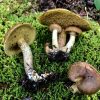
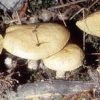
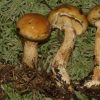
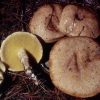
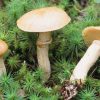
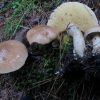
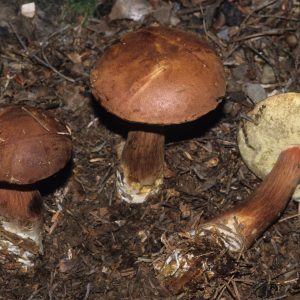
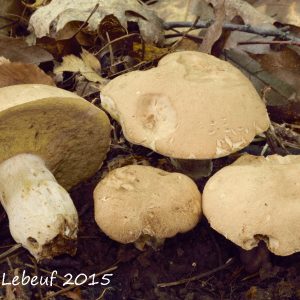

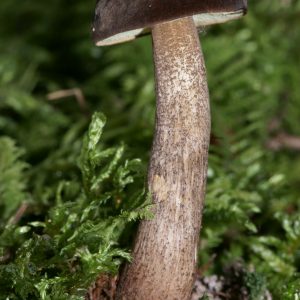
Got something to discuss?